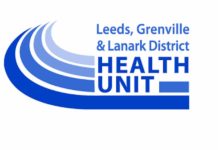by News Media Canada
Taking steps to protect your family’s health at home is a natural instinct. If there’s mold, you clean it. If you have a pest infestation, you remove the pests. But there’s a major pollutant commonly used in homes across Canada that increases risks to health that not enough people are aware of: gas.

Across North America, many cities are moving to ban gas in new housing – Montreal, Nanaimo and New York state, to name a few. Beyond the climate implications, decades of global scientific research has pointed to links between gas use and increased health risks. Yet, polling by Abacus Data shows that 47% of people in Canada are unaware of these risks. To help equip families in Canada with the knowledge they need to reduce their risk levels at home, the Canadian Association of Physicians for the Environment – an organization of Canadian doctors who advocate for better health by improving the environment – launched a new educational campaign focused on the health risks of gas called “Heat – Cook – Breathe”.
What does using gas at home mean for your health? Gas, which is primarily methane, releases a mix of harmful chemicals including carbon monoxide, nitrogen dioxide, formaldehyde and benzene, which have been linked to serious health issues including asthma and other respiratory diseases, cancer, reproductive issues and more. Even short-term exposure can lead to coughing, wheezing, and eye, nose and throat irritation.
Children, seniors and people with pre‑existing conditions face the greatest risk. In fact, kids in homes with gas stoves are 42% more likely to develop asthma. According to CAPE, there’s several things that can be done to help mitigate the potential health risks.
While gas stoves are marketed as the gold standard of cooking, today’s technology has introduced other high‑performing options like induction cooktops. They work by heating the pan, not the stovetop, providing quick and precise heat. Not to mention, a safer option for kids helping in the kitchen. A portable induction cooktop is also an affordable alternative when only one burner is needed.
Electric heat pumps actually do the job of two appliances: the furnace and the AC. More efficient than gas furnaces, heat pumps extract thermal energy from the air to heat homes in the winter and cool them in the summer. They’re effective up to ‑30C. Plus, research shows that heat pumps most often result in lower energy bills.
Adding to the savings, the federal government as well as several provinces and municipalities. offer financial incentives – potentially thousands of dollars to those who qualify – to help households make the switch. Visit heatcookbreathe.ca for more information on these programs.
While the best option is to not use gas at all, the continued rising costs of living can put new appliances out of reach for many people. There are, however, several things that can lower, while not completely eliminate, potential exposure.
First and foremost, carbon monoxide (CO) and nitrogen dioxide (NO2) detectors are necessary. Known as the silent killer because it is colourless, odorless and tasteless, CO is the cause of death for around 300 people per year, with hundreds more requiring medical attention.
For older and less well-maintained gas appliances, the risk is higher still. Schedule regular inspections with a licensed technician who is trained to detect hazardous defects and leaks, and perform preventative maintenance.
According to a Harvard Health Publishing study, well‑ventilated gas appliances still pose health risks, while a Stanford University study found that even when off, gas stoves can leak. To mitigate these risks, ensure the range hood vents to the outdoors, and always turn it on and open windows when cooking on a gas stove. It’s a good practice to leave the window open for a while after cooking to help clear out lingering fumes as studies show they can remain long after the gas is shut off.
Keep in mind, a range hood doesn’t eliminate the fumes. It transfers them outside, contributing to outdoor air pollution, so be extra cautious of kids playing near exterior vents when gas is being used. Patio furniture and leisure areas should also be placed well away from exterior vents.
To learn more visit heatcookbreathe.ca.





